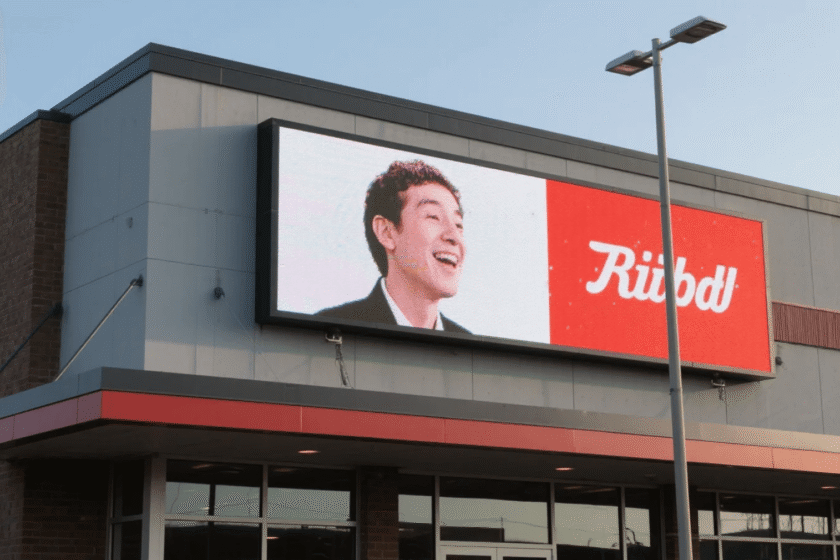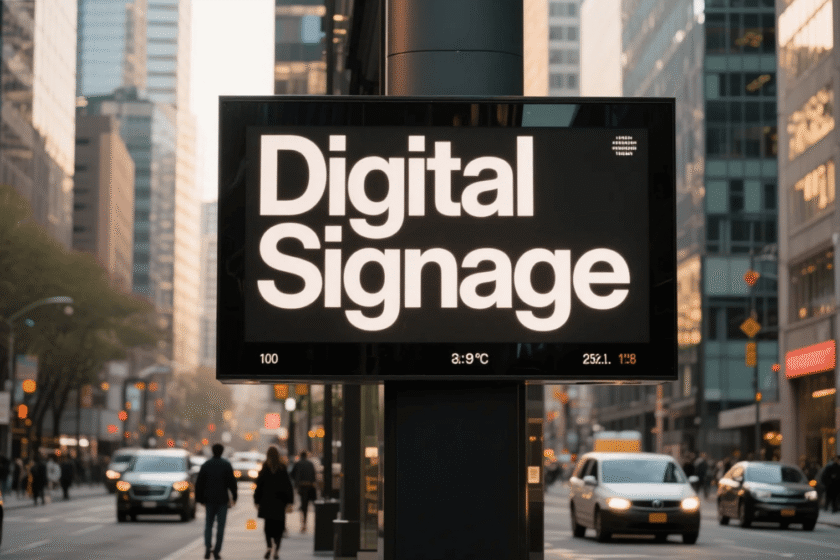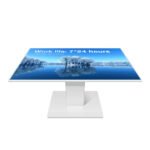Is Exterior Digital Signage Worth the Investment for Your Business?
The modern consumer journey is no longer confined to the interior of a store or a dedicated digital platform. Instead, businesses are increasingly recognizing the unparalleled opportunity presented by high-impact, street-facing communications. This evolution has solidified the role of exterior digital signage as a cornerstone of contemporary marketing and public information delivery. For organizations operating across retail, hospitality, transportation, or corporate campuses, the decision to deploy outdoor displays is substantial, demanding a thorough understanding of the technology, strategic applications, and long-term financial implications. This deep dive aims to provide product users and decision-makers with the substantive knowledge required to evaluate the true worth of this significant investment.
Unpacking the Technology of Exterior Digital Signage: Beyond the Screen

The transition from conventional indoor screens to robust outdoor displays presents a formidable engineering challenge. Unlike a monitor housed in an air-conditioned office, an exterior digital signage unit must function flawlessly while exposed to the harshest environmental variables—a mandate that necessitates specialized design and construction. Understanding these technical foundations is the first step in assessing product quality and longevity.
The Imperative of High Luminosity and Contrast
A critical distinction between indoor and outdoor digital signage lies in required screen brightness. Standard indoor displays typically operate around 300 to 700 nits (candelas per square meter). Conversely, screens designed for direct sunlight exposure must achieve significantly higher levels, often in the range of 2,500 to 10,000 nits. This extreme luminosity is not merely a feature; it is an absolute necessity to overcome solar washout, ensuring that the content remains vividly clear and legible even at high noon.
Furthermore, dynamic contrast ratio plays an equally vital role. Even with high brightness, if the screen cannot differentiate between bright whites and deep blacks effectively under strong ambient light, the message’s impact is diminished. Consequently, leading manufacturers integrate advanced optical bonding and anti-reflective coatings. The purpose of these enhancements is to reduce glare and scatter, thereby preserving color saturation and contrast, which is paramount for conveying the brand’s visual identity effectively to passing traffic and pedestrians.
Engineered for Resilience: IP Ratings and Thermal Management
The very nature of an outdoor installation dictates the need for supreme durability. The international standard for ingress protection, known as the IP rating, quantifies the display’s resistance to solid objects (like dust) and liquids (like rain or pressure washing). A professional-grade exterior digital signage unit typically requires an IP rating of IP65 or higher to guarantee operational integrity against heavy weather, humidity, and airborne pollutants.
- Ingress Protection: The first digit (e.g., ‘6’) denotes dust resistance, indicating the enclosure is completely sealed against foreign particles. The second digit (e.g., ‘5’ or ‘6’) signifies water resistance, ranging from protection against water jets to temporary submersion.
- Thermal Management: Perhaps the most complex engineering feat in outdoor display technology is managing heat. Direct sunlight causes internal temperatures to soar, which can rapidly degrade components, leading to screen blackouts or reduced lifespan. Reliable systems incorporate sophisticated active cooling (fans, specialized vents) or passive cooling (heat sinks, thermally conductive materials) to maintain the operating temperature within the optimal range. Without exceptional thermal management, even the highest quality displays will fail prematurely, undermining the entire investment.
Strategic Applications: Where Exterior Digital Signage Drives Value

The application potential of outdoor displays transcends simple static advertising; it is about dynamic, contextual communication that captures attention and influences behavior in real-time. The unique capabilities of exterior digital signage allow businesses to achieve communication goals that traditional media simply cannot match.
Elevating Retail and Hospitality Engagement
In the highly competitive retail and hospitality sectors, the storefront is the primary tool for conversion. Large-format outdoor LED walls or integrated window displays serve as digital billboards, broadcasting promotions, showcasing high-definition product videos, and announcing time-sensitive offers. This dynamism results in far higher recall rates compared to printed posters.
For hospitality venues, such as hotels or restaurants, digital signage is used not only for promotional purposes but also for operational efficiency. It can display daily specials, waiting times, or event schedules. Furthermore, wayfinding solutions powered by outdoor kiosks can guide visitors across sprawling corporate or resort campuses, streamlining the guest experience and reducing the strain on human staff. This immediate, high-visibility communication proves invaluable in high-traffic, fast-moving environments.
Transforming Public and Transportation Hubs
The public sector relies heavily on clear, dependable information flow, and this is where the resilience of exterior digital signage shines. At bus stops, train stations, and airports, these displays provide essential, real-time data—delays, schedules, route changes, and emergency alerts. The ability to instantly update information from a centralized network is critical for maintaining public safety and operational coherence.
- Public Safety: In times of emergency, the displays can instantly switch to mandated governmental warnings or evacuation instructions.
- Efficiency: The integration of these screens with live data feeds (e.g., GPS tracking of buses) ensures passengers receive accurate information, significantly improving the overall service quality and reducing frustration. The visibility and durability of the technology mean that this vital information is consistently accessible, regardless of the time of day or prevailing weather conditions.
The Power of Dynamic Advertising and Experiential Marketing
Perhaps the most compelling use case is in advertising. Exterior digital signage allows advertisers to move beyond static, fixed-cost billboards into a realm of highly flexible, programmatic advertising. Brands can adjust their messaging based on a multitude of real-world variables, maximizing relevancy and impact.
- Contextual Triggers: Content can be programmed to change based on the weather (e.g., showing ice cream ads on a hot day), time of day (e.g., breakfast menus in the morning), or even demographic movement detected by anonymized sensors.
- Experiential Campaigns: Cutting-edge installations are increasingly integrating interactive elements, such as touchscreens, QR codes, or augmented reality features, turning a simple viewing experience into a memorable brand interaction. Consequently, these dynamic campaigns drive higher engagement rates and offer measurable performance data, a significant advantage over traditional, non-digital advertising mediums.
The Financial and Operational Case for Adoption: ROI and Total Cost of Ownership (TCO)

The significant initial capital expenditure associated with high-end exterior digital signage often prompts scrutiny from financial planners. However, a comprehensive analysis of the Return on Investment (ROI) and Total Cost of Ownership (TCO) demonstrates that, over time, the operational and strategic benefits overwhelmingly justify the investment.
Calculating the Return on Impression (ROI)
The ROI for digital signage is calculated based on several quantitative and qualitative factors. Quantitatively, the savings from eliminating printing, shipping, and installation costs for static media are substantial, accruing over the display’s service life. Moreover, in advertising-driven models (e.g., retail centers leasing screen time), the display becomes a direct revenue stream.
Qualitatively, the impact on sales conversion rates and brand perception provides the most significant return. The high-impact visibility drives increased foot traffic and impulse purchases. Studies consistently show that digital content commands significantly higher attention levels than static posters, translating directly into a greater volume of impressions and, ultimately, sales. A well-placed, high-quality display quickly becomes an active asset, generating revenue and brand lift, rather than a depreciating expense.
Mitigating Risks: Maintenance and Longevity Planning
The Total Cost of Ownership (TCO) requires consideration of the initial hardware, software licenses, content creation, and crucially, maintenance and energy consumption. Investing in quality hardware with robust IP ratings and superior thermal management minimizes the frequency of service calls and component failures, which are the main drivers of high TCO in inferior products.
Effective longevity planning involves:
- Remote Monitoring: Utilizing specialized software that monitors the display’s health (temperature, internal voltage, fan status) allows for preventative maintenance, addressing minor issues before they lead to catastrophic failure.
- Modular Design: Displays that feature easily swappable modules, power supplies, or control cards significantly reduce repair time and labor costs, ensuring maximum uptime.
- Therefore, while the initial price tag is high, the longer lifespan, lower maintenance requirement, and superior uptime of professional-grade outdoor displays result in a lower TCO and a higher overall ROI compared to cheaper, less robust alternatives.
Content Strategy: Making Your Message Cut Through the Noise
The most technologically advanced screen is merely a passive surface without a compelling content strategy. Unlike indoor screens where viewers are often captive, exterior digital signage must compete for attention in a fast-paced environment where the audience is in motion. The key is to deliver maximal information with minimal cognitive load.
Best Practices for High-Impact Outdoor Visuals
The principles of effective outdoor content are brevity, boldness, and contrast.
- Brevity: Messages must be understood in three to seven seconds—the typical viewing window for a passing motorist or pedestrian. This necessitates the use of large, simple fonts, minimal text, and punchy, direct language.
- High Contrast: Content must use high-contrast color palettes (e.g., white text on a black or dark-colored background) to maintain readability under glaring sunlight. Overly complex or visually busy backgrounds should be strictly avoided.
- Motion: Subtle, dynamic animation is preferable to static images, as movement naturally draws the eye. However, the motion must be smooth and non-distracting to avoid confusing the viewer or creating a traffic hazard.
Integrating with Data for Contextual Content Delivery
The future of digital signage lies in its integration with external data sources, transitioning from simple playback to intelligent, reactive communication. This connectivity transforms the displays into powerful tools for hyper-relevant engagement.
By integrating the signage system with sensors, Point of Sale (POS) data, or even localized traffic information, content can become truly contextual. For instance, a retail establishment could automatically adjust its display to promote umbrella sales when precipitation is detected or showcase items with low inventory to drive rapid sales clearance. Conversely, fast-food restaurants can use live queuing data to manage perceived wait times by promoting specific, easy-to-prepare items during peak hours. This programmatic, data-driven approach ensures that the message is always optimized for the current physical and commercial environment, maximizing its effectiveness.
Conclusion
The question, “Is Exterior Digital Signage Worth the Investment for Your Business?” is decisively answered by assessing its unique capabilities. It is not merely a replacement for printed posters but a sophisticated, resilient, and dynamic communication platform. For the product user, choosing the right system means prioritizing durability, luminosity, and intelligent thermal management. When paired with a strategic, data-driven content plan, these high-end displays transform passive facades into active, revenue-generating assets. By committing to quality hardware and leveraging the power of contextual content, businesses secure a future-proof method for capturing the attention of a mobile, modern audience and cementing their brand presence in the urban landscape.
Frequently Asked Questions (FAQ)
Q: What is the ideal IP rating I should look for in exterior digital signage?
A: For most outdoor installations exposed to the elements (rain, dust, snow), an IP rating of IP65 or higher is strongly recommended. IP65 ensures the enclosure is completely sealed against dust and protected against water jets, guaranteeing reliable operation and component longevity regardless of the weather conditions.
Q: How often does exterior digital signage typically require maintenance?
A: High-quality, professional-grade systems are designed for minimal maintenance. With robust components, passive or smart active cooling, and proper installation, they should only require periodic routine checks (e.g., cleaning the display surface, verifying ventilation) every 6 to 12 months. Advanced remote monitoring systems further reduce the need for physical service visits by flagging potential issues early.
Q: Can external light or sunlight damage the screen over time?
A: Prolonged, intense direct sunlight does not typically damage a high-end commercial screen that has been specifically designed for outdoor use. However, sustained high temperatures can lead to Isotropic Blackout if the screen lacks adequate thermal management. This temporary issue causes the screen to blacken until it cools down. Choosing a display with superior thermal engineering and high-temperature LCD panels prevents this problem and ensures content uptime.
Q: Is it possible to integrate my existing content management system (CMS) with a new outdoor display?
A: Yes, nearly all professional exterior digital signage solutions are designed to be hardware-agnostic, meaning they utilize standardized connectivity (HDMI, DisplayPort, or integrated media players) and are compatible with most industry-leading CMS platforms. The key is ensuring your chosen media player is rated for the outdoor display’s high operating temperature environment.



